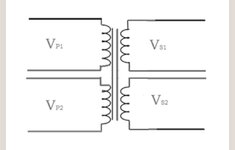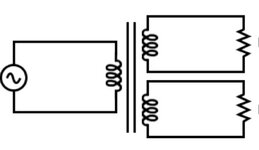Toni rodrigo
Newbie
Hey everyone 
for my finaI project in the university I nneed a transformer like something in the picture that I attach.
1 or 2 windings in primary and 2 windings in secondary.
I want to work with the transfoemer with sine wave at frequency of 30Khz.
Voltage:5V
Max Current:1A
ratio: 1:1:1:1
I need something like 1 "input" and 2 "outputs"
I didn't find something that I can buy in the internet
Thank you very much
for my finaI project in the university I nneed a transformer like something in the picture that I attach.
1 or 2 windings in primary and 2 windings in secondary.
I want to work with the transfoemer with sine wave at frequency of 30Khz.
Voltage:5V
Max Current:1A
ratio: 1:1:1:1
I need something like 1 "input" and 2 "outputs"
I didn't find something that I can buy in the internet
Thank you very much

